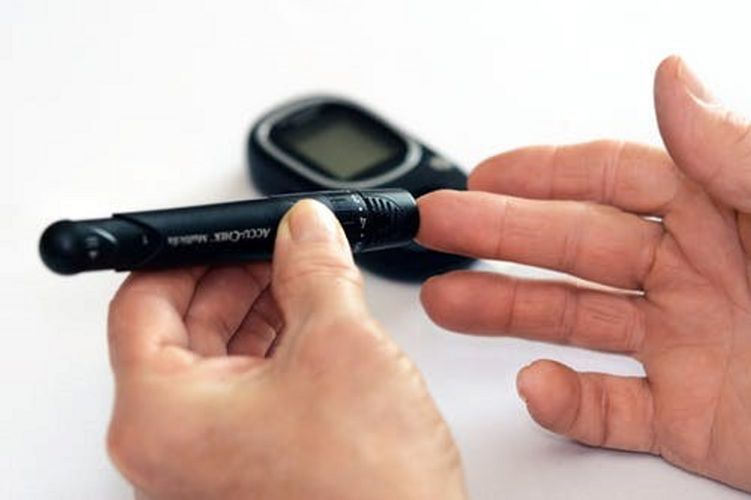More than 30 million Americans have been diagnosed with Type 2 Diabetes and an additional 85 million are prediabetic. Several million others remain undiagnosed[i]. How could this serious condition have gotten so out of hand and yet affect so many people? Partly because it has no symptoms, especially in the early stages.
A recently published large study of more than 27,000 individuals found that indicators of Type 2 Diabetes were evident “more than 20 years before its diagnosis”[ii]. (Unfortunately, lab tests used to indicate insulin resistance, the main predictor of future diabetes, are complex and not yet standard in clinical settings). This same study concluded that prevention of diabetes should therefore begin long before even pre-diabetes is identified. So if you’re waiting until it’s “official”, that’s probably far too long.
Who can get Type 2 Diabetes?
Risk factors for developing diabetes include[iii]:
- overweight or obese
- age 45 or older
- family history of diabetes
- African American, Alaska Native, American Indian, Asian American, Hispanic/Latino, Native Hawaiian, or Pacific Islander heritage
- high blood pressure
- low level of HDL (“good”) cholesterol or a high level of triglycerides
- a history of gestational diabetes or having given birth to a baby weighing 9 pounds or more
- lack of physical activity
- a history of heart disease or stroke
- depression
- polycystic ovary syndrome, also called PCOS
- acanthosis nigricans—dark, thick, and velvety skin around your neck or armpits
Diagnosing Type 2 Diabetes
What is the typical pattern for adults who end up with Type 2 Diabetes? For many, the first indication of the condition comes with the diagnosis itself.
This is determined through a combination of test results that might include fasting blood sugar (that is, from blood drawn early in the morning before breakfast) of at least 126 mg/dL and an HbA1c (a more stable measure of the amount of blood sugar that is attached to hemoglobin) of 6.5 or higher.
A diagnosis of pre-diabetes is determined if fasting blood sugar measures 100-125 mg/dL.
Type 2 Diabetes is often (but not always) accompanied by other disorders such as high blood pressure, high cholesterol, and the most significant of all: obesity, especially excess abdominal fat. While the link between diabetes and obesity is clear, the specific mechanism that links them is not.
In addition, advanced cases of Type 2 Diabetes can come with serious symptoms such as: retinopathy (damage to the retina of the eye), cardiovascular problems, neuropathy and skin ulcers.
Conventional medical treatment
Pre-diabetes is now treated more conservatively with a combination of dietary recommendations, exercise and the recommendation to lose weight. At this stage, daily self-monitoring might also be recommended (measuring blood sugar using the dreaded “prick” test).
However, occasional and very brief visits to the doctor are typically not the best context for conversations about these preliminary steps. This is because many people face major challenges making lifestyle changes in their eating and exercise habits, let alone accommodating self-testing for blood sugar.
If someone has moved into Type 2 Diabetes territory from pre-diabetes, the most common medical treatment is a range of oral medications, or combinations of them, with the aim of controlling the body’s blood sugar levels. Many people are also simultaneously taking medications to control blood pressure and cholesterol.
As the condition progresses, blood sugar can often no longer be controlled with drugs, at which point insulin is prescribed, which must be injected.
Another strategy is bariatric surgery (which includes a variety of procedures), particularly for those who are also very obese.
For more advanced cases of Type 2 Diabetes, additional treatment is also needed for the sometimes dangerous conditions of retinopathy, neuropathy and skin problems.
What to do with all this information? Prevention, prevention, prevention
A condition like Type 2 Diabetes, where no symptoms are seen for many years, might seem impossible to prevent before it’s too late. But this is far from the truth. Here is what you can do:
- Know your risk factors. The presence of even a single risk can make you much more likely to develop Type 2 Diabetes, especially being overweight.
- Get screened regularly. Even though tests detect Type 2 Diabetes long after insulin management problems start, the earlier you know about it, the better.
- Here’s the most important takeaway: It’s possible to actively modify many of the risk factors long before they become problematic, especially weight gain. This can be achieved through lifestyle choices such as eating only or largely whole foods, exercising regularly and managing stress levels. Even with several risk factors present, it’s possible to keep Type 2 Diabetes away. It doesn’t mean it’s easy, but it does mean Type2 Diabetes can be a preventable condition.
Reversing Type 2 Diabetes with nutrition is also possible
Even after the window to prevention has closed, there is growing evidence that Type 2 Diabetes can be reversed without drugs or surgery, mainly through weight loss. But this is more easily said than done.
The first element of this strategy is a long-term approach, as opposed to a quick-fix. Many with pre-diabetes or Type 2 Diabetes have tried every “diet” known to (hu)man, having lost and regained the excess weight over and over again. (For more on this, check out a previous blogpost: “4 Reasons Why You Can’t Keep the Weight Off”).
A second element is that unless insulin resistance is halted, the weight just creeps back because the underlying metabolic process driving weight gain has not been addressed.
The third important element is a personalized approach to nutritional therapy that takes into account eating patterns, preferences, metabolic goals and comorbidities (or other conditions).[iv]
A fourth element can also make a big difference. Michael Dansinger, MD Director of the Diabetes Reversal Program at Tufts Medical Center, emphasizes the benefit of coaching assistance: “I suspect that having a good coach can quadruple the odds of long-term success compared to going it alone. It is just too hard to police yourself without help.”[v]
Despite this good news, the further Type 2 Diabetes has progressed, the more challenging it can be to reverse it. Those who are “insulin-dependent” (injecting insulin) may find it especially difficult. This is because at some point the pancreas begins to lose the capacity to produce its own insulin.
All of this makes prevention, prevention, prevention a much better overall strategy.
Metabolic balance®, the nutrition program I am certified to coach that can help you achieve sustained weight loss and increase your chances of either preventing or reversing Type 2 Diabetes. This program, based on more than 20 years of clinical experience, begins with an analysis of your unique blood labs and health profile. These data are the basis of a personalized food plan incorporating only whole foods that directly addresses insulin resistance. The program also includes regular coaching sessions with me.
For more information, visit my profile, follow me, and learn about WellnessCareOnline, which focuses on balancing hormones, metabolism, weight and mood. And call me for a free 15-minute consultation to learn more about how I work with clients to modify the risk for developing Type 2 Diabetes and even reverse it.
What have you done to prevent or reverse Type 2 Diabetes?
[i] https://www.medicalnewstoday.com/articles/3
[ii] Diabetologia. "Diabetes may begin more than 20 years before diagnosis." ScienceDaily. ScienceDaily, 4
October 2018. www.sciencedaily.com/releases/2018/10/181004192202.htm
[iii] https://www.niddk.nih.gov/health-information/Diabetes/overview/risk-factors-type-2-Diabetes
[iv] https://www.thelancet.com/action/showPdf?pii=S2213-8587%2819%2930149-4
[v] https://www.bostonmagazine.com/sponsor-content/80-of-diabetics-can-reverse-their-disease-heres-how/




















